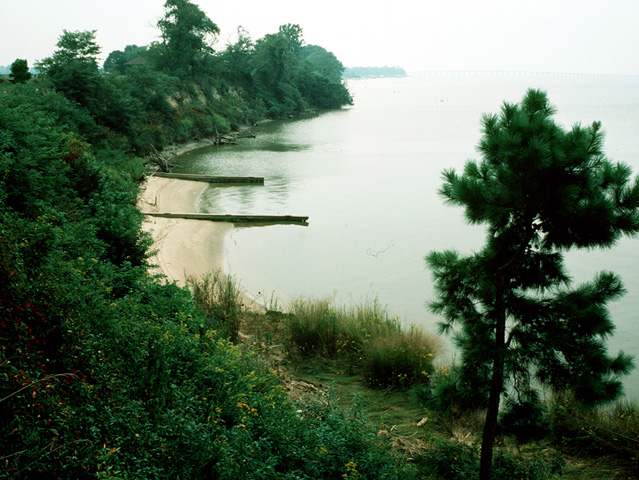
Beaches and Shores, Part 4
Sea Level Changes (continued)
Longshore and Rip Currents
Longshore and rip currents are currents caused by wave action.
• Longshore currents are caused by waves approaching the shoreline at an angle.
• This pattern pushes the water in the surf zone along the beach. This is called a longshore current.
• Wave uprush and backwash also move sand grains diagonally up and down the beach in the same direction as the longshore current.
• Large quantities of sediment can be moved along a coastline by these processes.

Longshore currents flowing along this coast (away from the viewer) have deposited sediments on the near side of the rigid structures in the water. Note the loss of sediment along the beach in the distance. (Figure from Hardaway and Byrne (1999))
• Rip currents occur when waves have "piled up" water close to the shore. When the higher water level gets too high, the water rushes out to sea, toward lower water levels, very quickly.